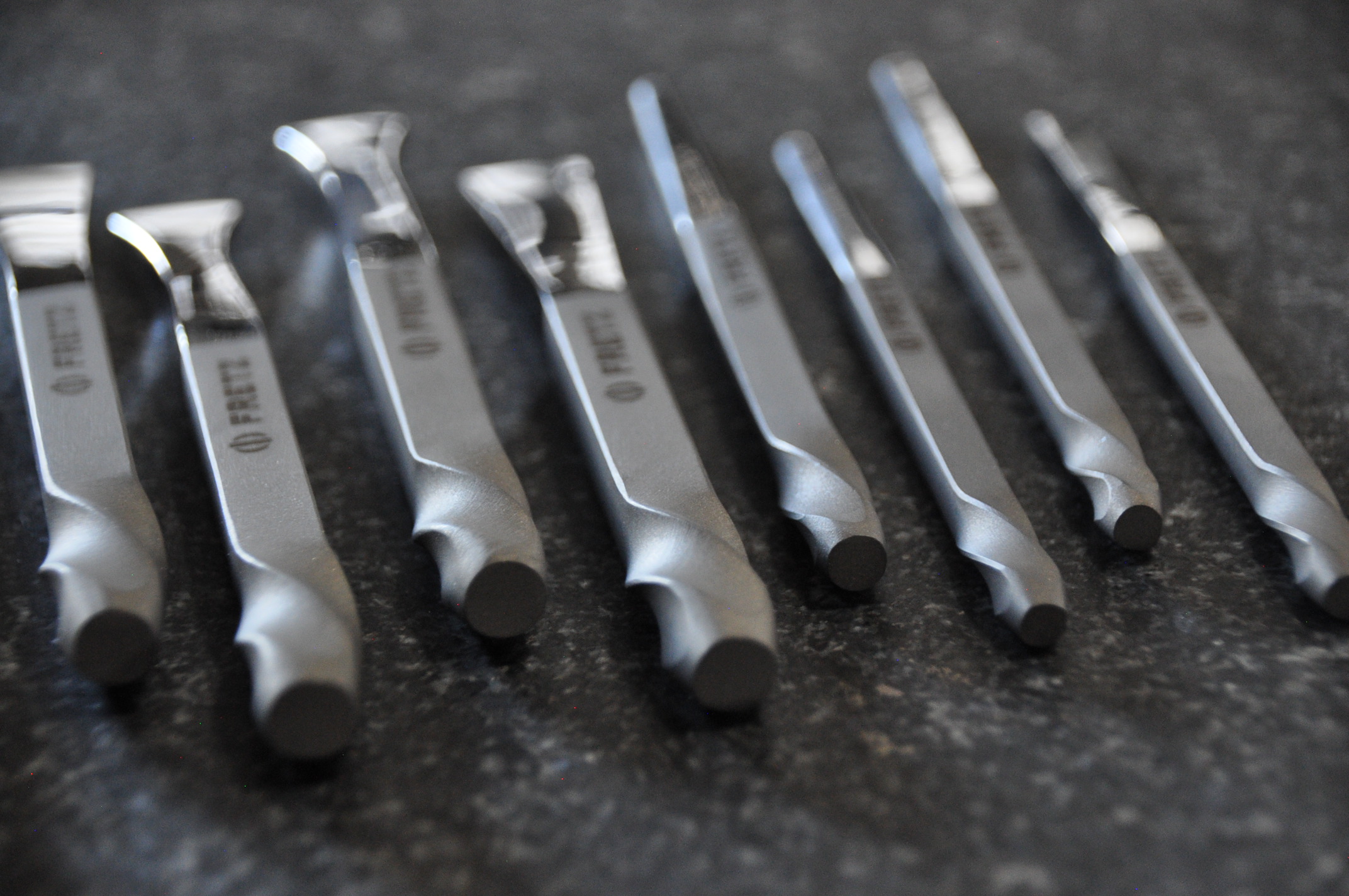Mokume-gane (pronounced moh-kuh-may gah-nay). “wood eye”
A Japanese metalworking technique dating to the Edo period craftsman, Shoami Denbei (1651-1727)., layers of different non ferrous metals are fused together with heat and pressure which are then worked to produce a patterned laminate. With fusion the stack is heated to achieve a flow state of one or more of the component metals. While some of the metals are partially fluid, alloying occurs at the interface of each layer. As it cools this stack becomes a single billet.
Precise control of heat and pressure are applied to the various metals so the layers of the laminate fuse correctly, this is time consuming and requires significant experience and expertise, as well as innovation in methodology. The metals will delaminate if any oxygen is allowed to enter the stack or if the temperatures and timing are not perfect.
The modern process used by many today, relies on various machinery and kilns to achieve this material through diffusion, with this method extreme compression and long kiln times are used to produce an analog of Mokume Gane. While this is the common method used today it does not provide the true look, feel or quality of traditionally forged Mokume Gane.
Leif Winters
